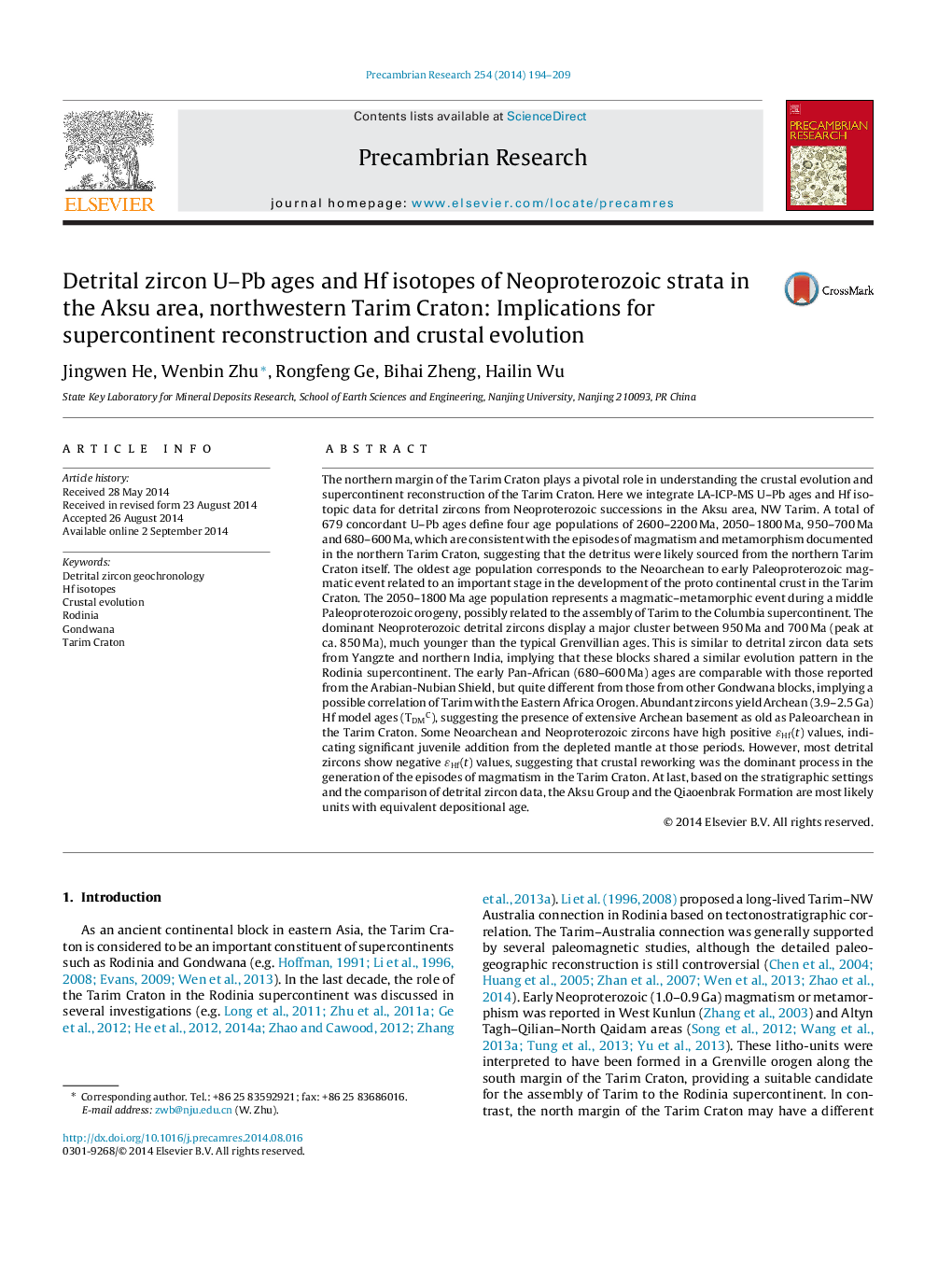| Article ID | Journal | Published Year | Pages | File Type |
|---|---|---|---|---|
| 4722873 | Precambrian Research | 2014 | 16 Pages |
•Depositional ages and regional stratigraphic correlations of Neoproterozoic successions in the Aksu area are proposed.•Four episodes of tectonic events and crustal evolution are determined in northern Tarim.•The affinity of Tarim with other blocks in the Rodinia and Gondwana supercontinents is proposed.
The northern margin of the Tarim Craton plays a pivotal role in understanding the crustal evolution and supercontinent reconstruction of the Tarim Craton. Here we integrate LA-ICP-MS U–Pb ages and Hf isotopic data for detrital zircons from Neoproterozoic successions in the Aksu area, NW Tarim. A total of 679 concordant U–Pb ages define four age populations of 2600–2200 Ma, 2050–1800 Ma, 950–700 Ma and 680–600 Ma, which are consistent with the episodes of magmatism and metamorphism documented in the northern Tarim Craton, suggesting that the detritus were likely sourced from the northern Tarim Craton itself. The oldest age population corresponds to the Neoarchean to early Paleoproterozoic magmatic event related to an important stage in the development of the proto continental crust in the Tarim Craton. The 2050–1800 Ma age population represents a magmatic–metamorphic event during a middle Paleoproterozoic orogeny, possibly related to the assembly of Tarim to the Columbia supercontinent. The dominant Neoproterozoic detrital zircons display a major cluster between 950 Ma and 700 Ma (peak at ca. 850 Ma), much younger than the typical Grenvillian ages. This is similar to detrital zircon data sets from Yangzte and northern India, implying that these blocks shared a similar evolution pattern in the Rodinia supercontinent. The early Pan-African (680–600 Ma) ages are comparable with those reported from the Arabian-Nubian Shield, but quite different from those from other Gondwana blocks, implying a possible correlation of Tarim with the Eastern Africa Orogen. Abundant zircons yield Archean (3.9–2.5 Ga) Hf model ages (TDMC), suggesting the presence of extensive Archean basement as old as Paleoarchean in the Tarim Craton. Some Neoarchean and Neoproterozoic zircons have high positive ɛHf(t) values, indicating significant juvenile addition from the depleted mantle at those periods. However, most detrital zircons show negative ɛHf(t) values, suggesting that crustal reworking was the dominant process in the generation of the episodes of magmatism in the Tarim Craton. At last, based on the stratigraphic settings and the comparison of detrital zircon data, the Aksu Group and the Qiaoenbrak Formation are most likely units with equivalent depositional age.
